Visiting the Three Mountains of Dewa, where you will walk on sacred mountains that are globally renowned
The Three Mountains of Dewa are listed in the Michelin Green Guide Japan and are constantly visited by worshippers.
The official visiting route is to visit Mount Haguro, Mount Gassan, and Mount Yudono respectively.
Here, we introduce a wide range of ways to visit the Three Mountains of Dewa, including the Mount Haguro route which can be done on a day trip and a full-fledged Yamabushi mountain ascetic experience.
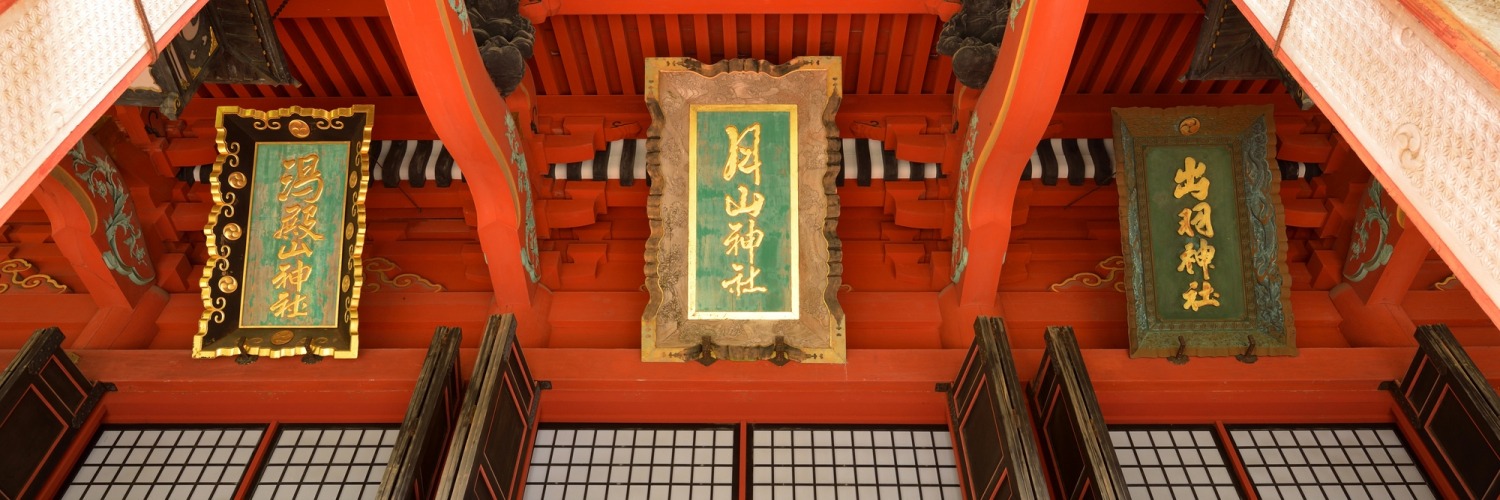
Three Michelin Stars! Mount Haguro is a sacred mountain recognized by the world
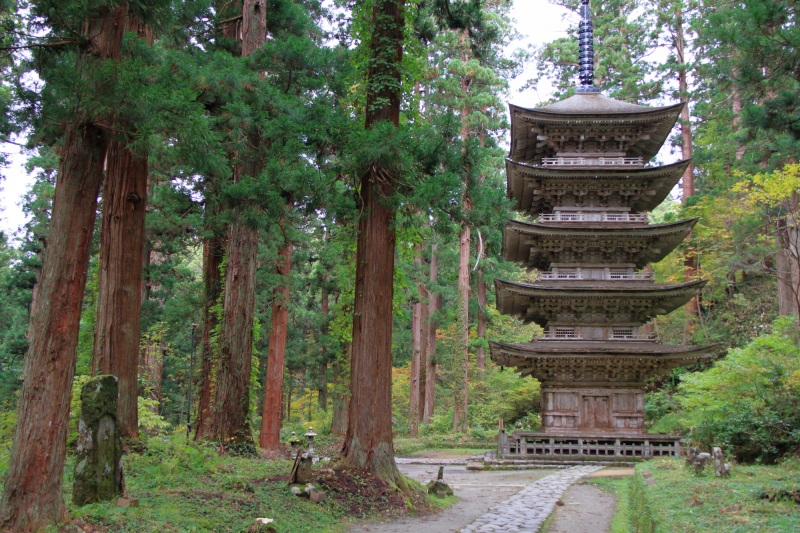
The Five-Storied Pagoda (a National Treasure) is the symbol of Mount Haguro
First, travel to the Zuishinmon gate of Mount Haguro, the gateway to the Three Mountains of Dewa. The line of cedar trees leading from here to the top of the mountain has been awarded three stars by the Michelin Green Guide Japan. After a 10-minute walk, you will see the Five-Storied Pagoda towering in the midst of huge cedar trees. The view is so powerful that it will make you unconsciously raise your voice. It is said to be the oldest pagoda in the Tohoku region and is designated as a National Treasure.
The road continuing ahead is lined with magnificent cedar trees.
Column
Jijisugi, the oldest cedar tree on Mount Haguro
The giant cedar tree standing to the left of the Five-Storied Pagoda is known as Jijisugi, which is said to be 1,000 years old. This is a recommended spot for taking a photograph that contains both the powerful cedar, which is designated as a Special Natural Monument, and the Five-Storied Pagoda, a National Treasure. The tree is illuminated in summer, giving it a wondrous appearance.
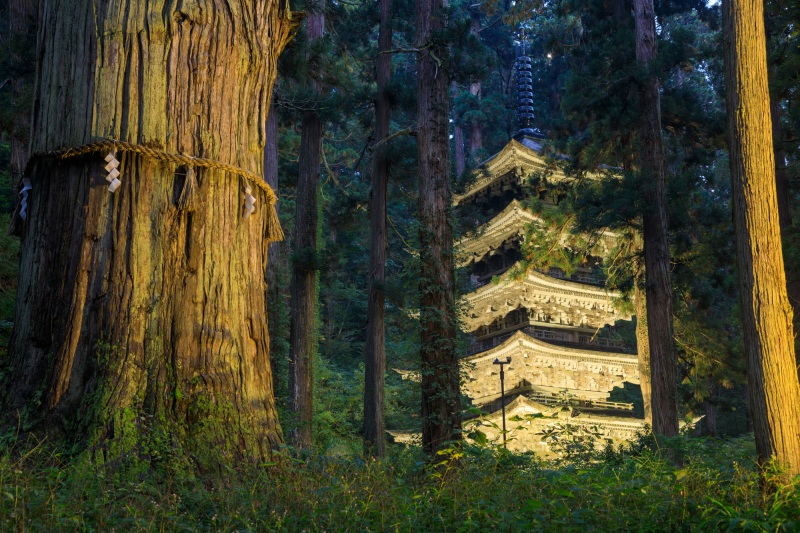
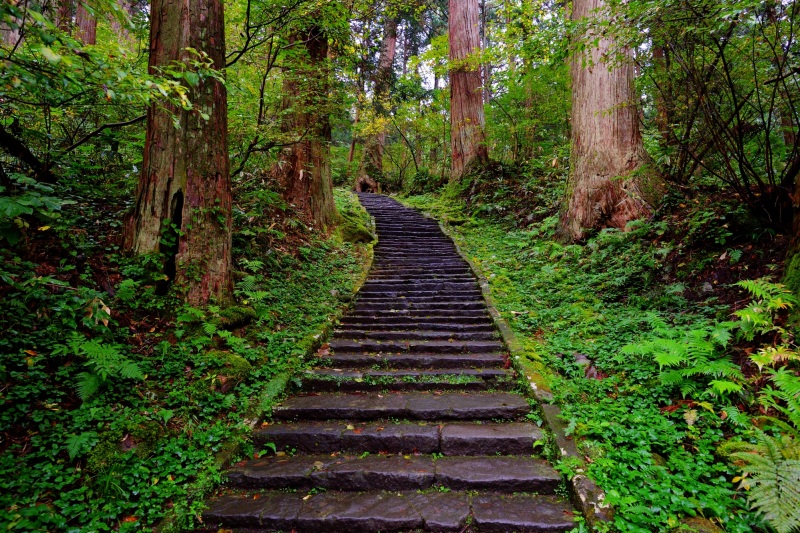
The famous 2,446 stone steps challenge!
There are 2,446 stone steps leading to the summit. The stairs are made up of the first to three slopes, and 33 drawings of sake cups, gourds, and other designs are carved on them here and there. It is said that if you find them all, your wish will come true.
After the second slope, there is a teahouse where you can take a rest and enjoy the spectacular view.
*The stone steps are not cleared of snow during the winter.
If you wish to reach the top of the mountain, it is recommended to use a car or a local bus.
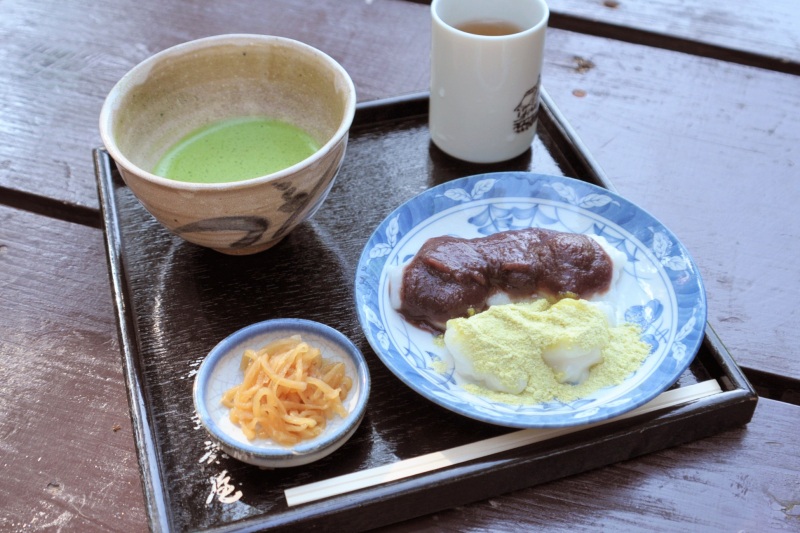
Take a rest with Chikara Mochi rice cakes at Ninosaka Chaya teahouse
The Chikara Mochi rice cakes at Ninosaka Chaya teahouse are made in a traditional way by pounding mochi rice with a pestle. Ninosaka Chaya's specialties are three types of rice cakes: Anko Mochi (rice cakes with adzuki bean paste), Kinako Mochi (rice cakes with sweet soy flour), and Natto Mochi (rice cakes with fermented soy beans). Taking a short break while looking out over the Shonai Plain is a special experience.
Here you can get a certificate to prove that you have climbed the stone steps. Be sure to get one as a souvenir!
(Open from late April to early November)
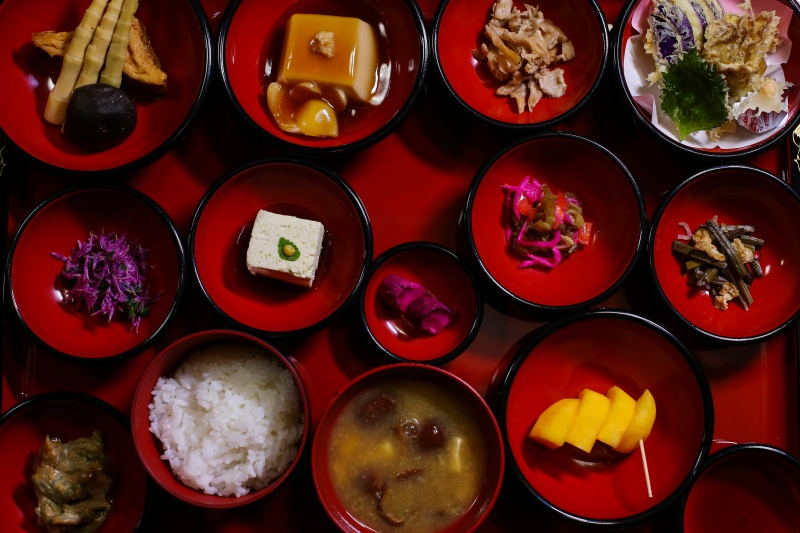
Savor nutritious and flavorful Shojin Ryori (Buddhist vegetarian cuisine) at Haguro-san Saikan
Shojin Ryori has been handed down from long ago at Mount Haguro. It is said that the haiku poet Matsuo Basho also ate this cuisine when he visited the Three Mountains of Dewa on his pilgrimage when he wrote ""The Narrow Road to the North."" Seasonal wild vegetables, mushrooms, and more from the mountains are served on a tray. The most popular dish is sesame tofu covered with a sweet soy sauce-flavored sauce. Recharge your energy through this nutritious and flavorful vegetarian cuisine with the power of the mountain!
Saikan offers accommodations for those who visit the Three Mountains of Dewa. If you are planning to travel to Mount Gassan and Mount Yudono after Mount Haguro, how about spending the night here?
*Reservations are required for meals.
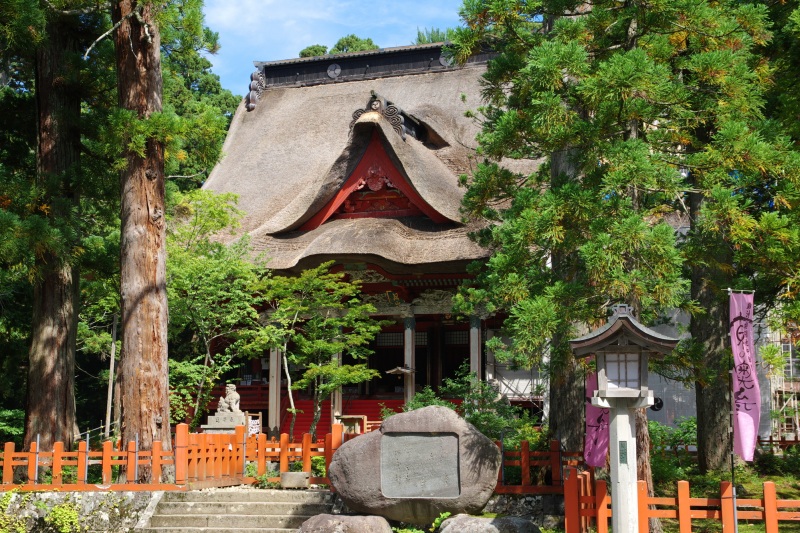
Visit Sanjin Gosaiden at Dewa Shrine where the deities of the Three Mountains of Dewa are enshrined
The presence of the large shrine hall with one of the largest thatched roofs in Japan is breathtaking! The all-lacquered interior is also powerful and worth seeing. As the Japanese name suggests, the three deities of Mount Gassan, Mount Haguro, and Mount Yudono are enshrined here. Although it is impossible to visit Mount Gassan and Mount Yudono in winter due to the snow, a visit to Sanjin Gosaiden is considered to mean that you have visited all three deities. This shrine is thus recommended for those who find it difficult to visit the three mountains.
*Mount Haguro is also covered with snow in winter. Don't forget to bring your tall rain boots.
Column
Here is where to prepare before your visit…
Inside the Ideha Cultural Museum near the Zuishinmon gate at the entrance to the line of cedar trees of Mount Haguro, you can find the Haguro Tourist Association, which is a useful place for gathering information before visiting the temples and shrines. The walking sticks to be used to walk along the cedar trees cost 100 yen each, and umbrellas and tall rain boots can be borrowed for free. *When it rains or snows in winter, the stone steps can be very slippery, so it is recommended to change into tall rain boots before visiting the temples and shrines.
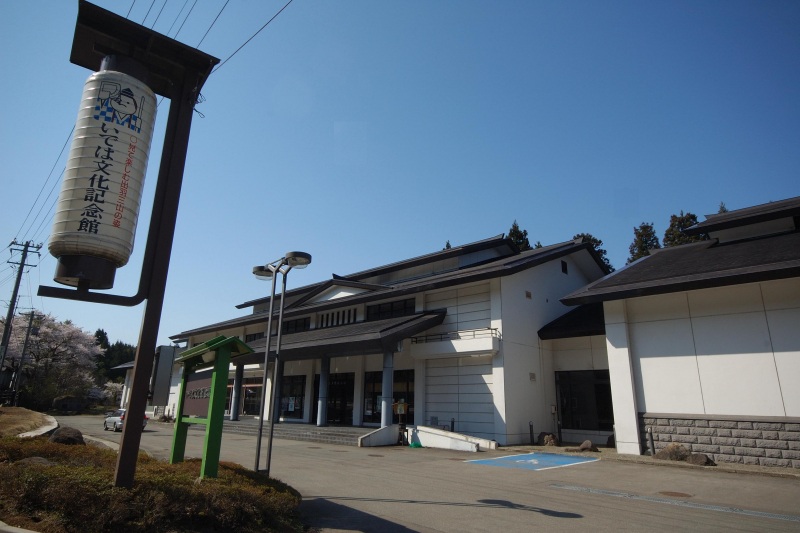
Access to Mount Haguro
[By walking]
Zuishinmon gate → (about 15 min. on foot) → Five-Storied Pagoda → (about 20 min. on foot) → Ninosaka Chaya teahouse → (about 30 min. on foot) → Sanjin Gosaiden
[By bus]
Haguro Zuishinmon bus stop → (about 15 min. by route bus) → Mount Haguro summit → (about 5 min. walk) → Sanjin Gosaiden
Click here for the bus timetable.
[By car]
Parking lot near Zuishinmon gate → (about 10 min. by car*) → Parking lot at the summit → (about 5 min. walk) → Sanjin Gosaiden
*A toll fee is required.
Mount Gassan, an ethereal sacred mountain dedicated to the dead
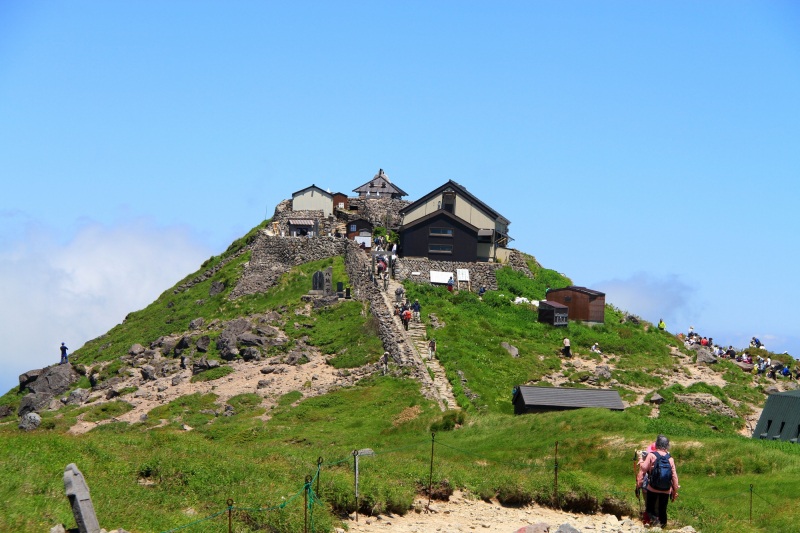
Gassan Shrine located at the summit of Mount Gassan
Gassan Shrine is located at the top of Mount Gassan. The view from the summit is spectacular, including not only Shonai Plain, but also Mount Chokai, the Asahi-Iide mountain range, and as far away as Mount Iwaki and Hachimantai. You can also see rare alpine plants everywhere.
The trail from the eighth station of Mount Gassan to the summit is a national park, and is also the precinct and private property of Dewa Sanzan Shrine. In particular, the inside of the main shrine of Gassan Shrine at the summit, among other areas within the vast grounds, has been a special sacred area since ancient times. (It takes about three hours one way from the eighth station of Mount Gassan to the summit).
■Opening period: July 1 to around September 15
■In order to visit the Hongu main shrine of Gassan Shrine, you need to undergo purification. (Purification fee: 500 yen)
*Lodging is available at the Gassan Busshoike-goya Pilgrim Lodge about 1 hour and 30 minutes up the trail, and the Mount Gassan Mountaintop Lodge about 3 minutes down the trail from Gassan Hongu main shrine (reservations required).
■Mountain climbing equipment such as climbing shoes, warm clothes, and a raincoat are required. Please be sure to bring food and water in case of accidents.
■The Mount Gassan Guide Association also offers round-trip guiding from the eighth station to the summit, as well as guiding for crossing over to Mount Yudono.
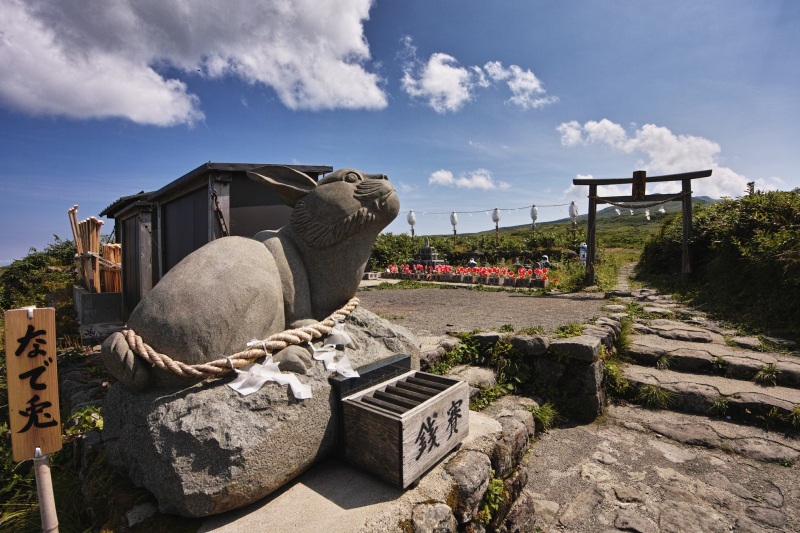
Midahara Shrine located at the eight station of Mount Gassan
If climbing Mount Gassan is too difficult for you, you can visit Midahara Shrine, which is about a 10-minute walk from the parking lot of the Gassan eighth station parking lot. It is said that visiting this shrine offers the same benefits as visiting the main shrine at the top of the mountain. The rabbit, which has long been believed to be the messenger of the deity of Mount Gassan, is said to have the power to ward off bad luck. Rub the ""Nade Rabbit"" near Midahara Shrine to get rid of bad luck.
Next to the shrine is the Midahara Pilgrims' Inn, where you can stay overnight. (Reservations required).
Column
Walking at Midagahara, the eighth station of Mount Gassan, a paradise in the sky
After visiting Midahara Shrine, it is recommended to take a walk at Midagahara, located at the eighth station of Mount Gassan. Even beginner climbers can easily take this walk because a wooden platform is maintained that takes about one hour to walk around. In summer, the area is filled with more than 130 kinds of alpine plants, making it one of the best alpine plant treasure troves in Japan.
In autumn, the colored grass spreads out as far as the eye can see! It is as if you are walking on a golden carpet. The contrast with the clear blue sky is truly spectacular. Why don't you go on a healing walking trip, feeling the fresh breeze at an altitude of about 1,400 meters?
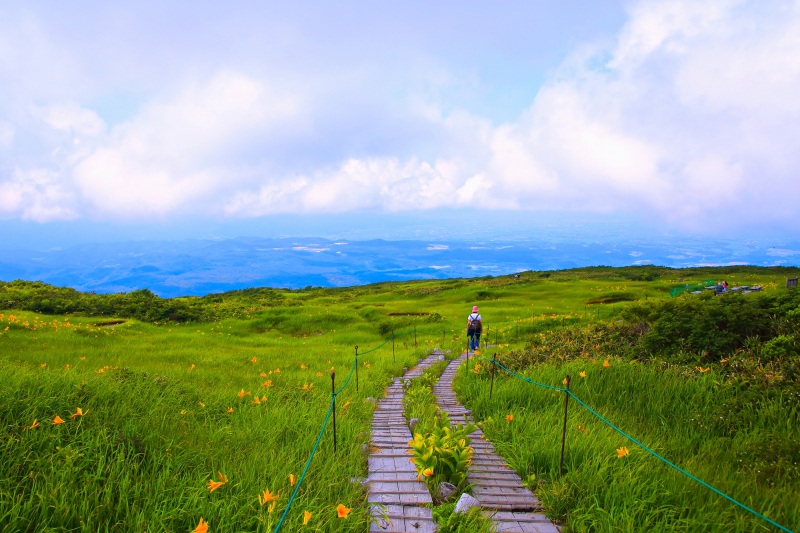
Yudono Shrine in the inner sanctuary of the Three Mountains of Dewa is mysteriously atmospheric
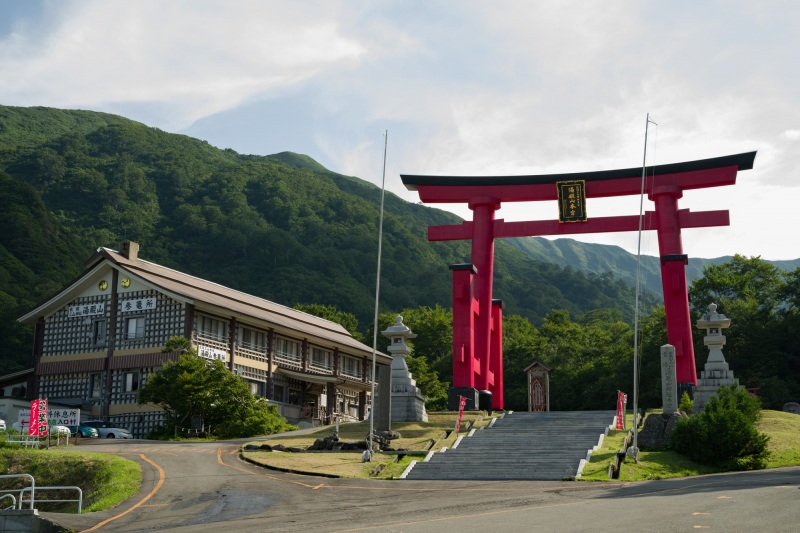
Mount Yudono is the last mountain where Yamabushi mountain priests who have trained at Mount Gassan and Mount Haguro conclude their ascetic practices. Since ancient times, it has been strictly forbidden to talk about it. The main shrine of Yudonosan Shrine is known for its strict rules: no photography is allowed, and no shoes are allowed in the shrine. By walking barefoot along the path, you may directly feel the energy of the mountain earth.
On the other hand, Mount Yudono is also known as the ""mountain of love"" and is famous as a spot for marriage. The ""Koi-no-Yamamori"" (love charm), which can only be obtained here at Mount Yudono, is a popular lucky charm for love among women.
At Yudonosan Ronsho, located next to the large torii gate, you can stay overnight or use the day-use bathing facility (reservation required). When bathing, please bow to the altar in the bathroom before taking a bath.
■Opening period: from around May 1 to November 3 (the opening ceremony is held on June 1, and the closing ceremony is held on November 1).
■In order to visit Yudonosan Hongu, it is necessary to undergo purification. (Purification fee: 500 yen)
You can walk from the large torii gate to the main shrine, but it is recommended to take the main shrine bus. (It is also possible to walk).
*If you drive your own car to the Yudonosan parking lot, you must take the toll road.
Column
A walk in autumn... a stroll through the autumn leaves is also recommended
Mount Yudono is also famous for its autumn foliage. In autumn, the mountains around the temple turn yellow and red in color. It takes about 20 minutes to walk from the large torii gate to the main shrine.
*Best time to see the autumn leaves: late September to early October.
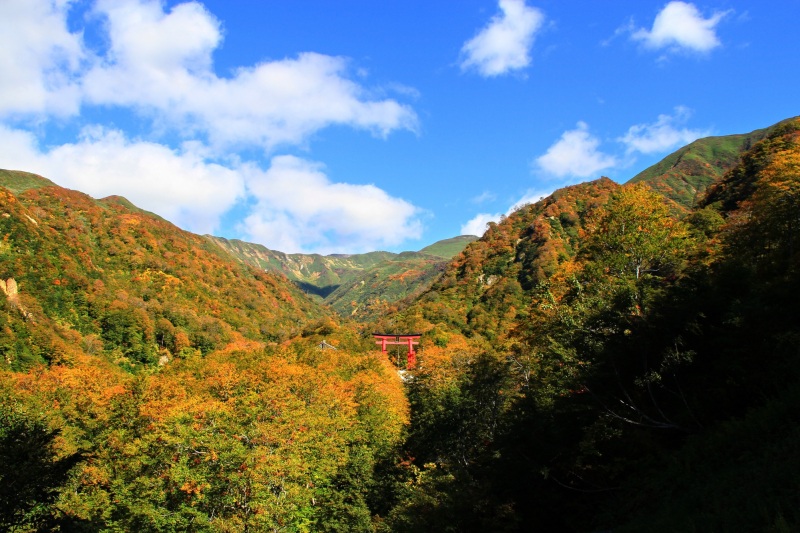
For people who are interested in more…
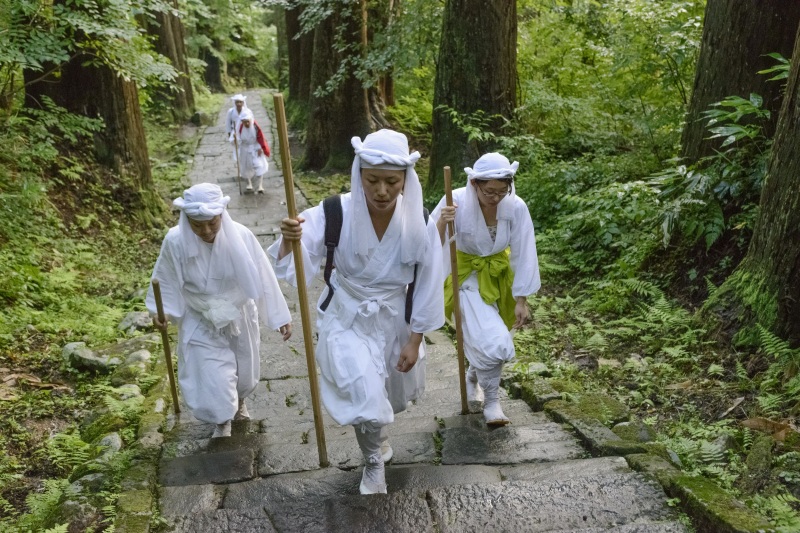
Experience the atmosphere of Shugendo practitioners by wearing shiroshozoku white clothing
If you visit Mount Haguro and Mount Yudono wearing the white clothing worn by Shugendo practitioners, you will be able to refine your mind and receive the power of the mountains even more. Why don't you put on the white clothing and walk the Shugendo steadily with your own feet?
*Reservations required at least three days in advance
*You can also make a reservation in advance for Buddhist vegetarian cuisine at the Shukubo accommodations facility, as you will be helped to get dressed in the white clothing at the Shukubo.
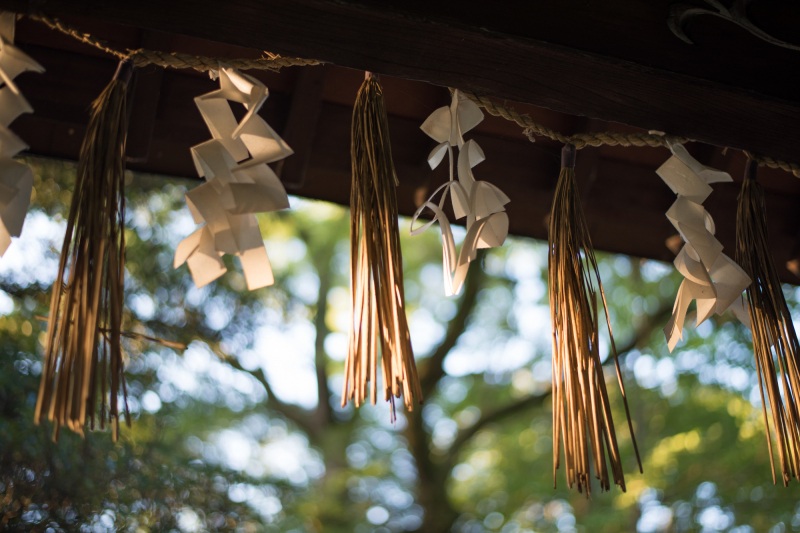
A religious service and Buddhist vegetarian cuisine... Unique experiences you can have by staying at a Shukubo
Shukubo were originally accommodation facilities for Shugendo practitioners, but recently, more and more facilities are accepting general worshippers. The appeal of Shukubo is that you can participate in the morning prayers known as Gongyo and taste Buddhist vegetarian food made with plenty of local ingredients. There are also Shukubo that offer tours of Mount Gassan and Mount Yudono guided by masters who know the mountains well, as well as mountain ascetic practices. Many people who want something that cannot be experienced through sightseeing alone participate in these tours.
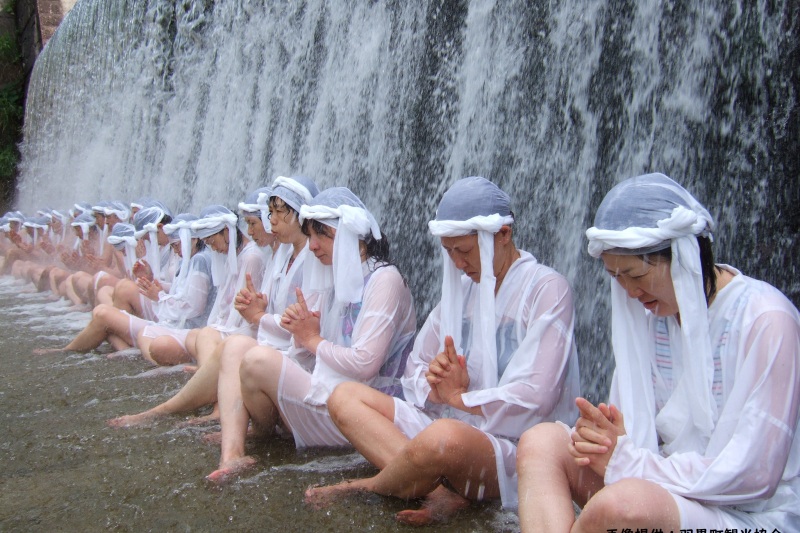
The Yamabushi experience for those who want to experience the culture of the Three Mountains of Dewa even more deeply
This Yamabushi experience, which allows you to experience some of the practices of Yamabushi asceticism, has no age or gender restrictions, and anyone with a strong will to endure the ascetic practices can participate. You can meditate under a waterfall and walk over a fire just like real Yamabushi practitioners.
The Yamabushi ascetism experience is truly a special one in which you become one with nature, absorb energy into your body, and reflect on yourself. Please come and experience the ascetic practices which many Yamabushi once strove to carry out.
For people who want to experience full-fledged ascetism even further
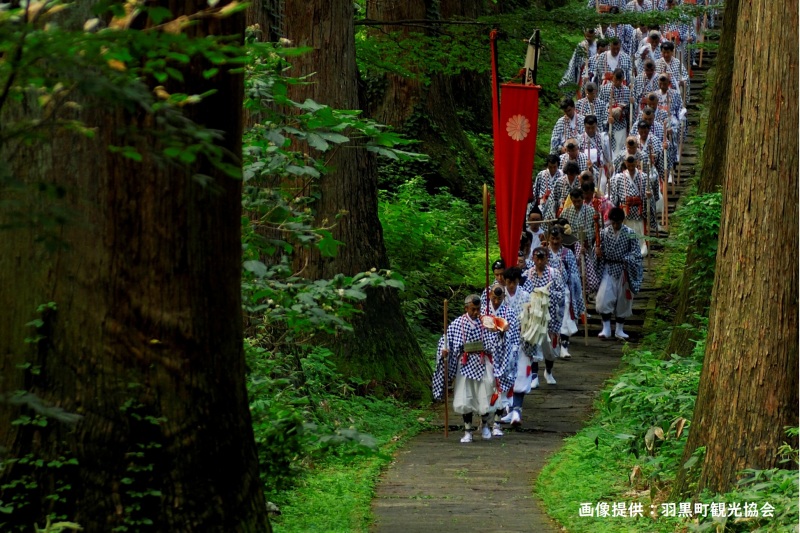
One of the most important ascetic practices for Haguro Shugen is the Aki no Mineiri. Shugendo practitioners seclude themselves in the mountains, where the spirits of the gods dwell and new life is nurtured, in order to be reborn. Haguro Shugen, which retains a strong sense of the old days, can also be experienced by the general public. Why don't you participate in a unique and authentic ascetic experience?